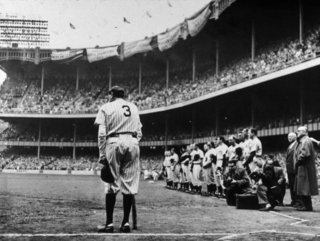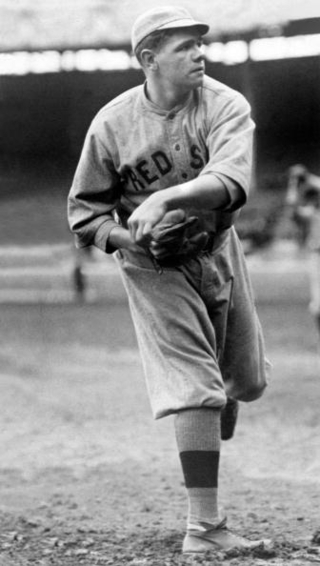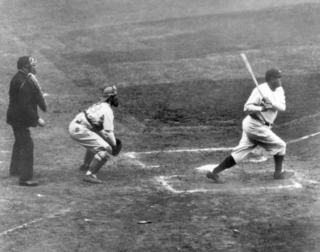UPclose: BABE RUTH

Reviews:
"…the complete, unvarnished story [told] in a snappy, concise style."
"…a candid portrait of a glorious athlete and an imperfect man."
"…extensive research and engaging conversational tone combine to produce a chronicle of Ruth’s life that both fans and novices will find hard to put down."
A Junior Library Guild Selection

Excerpt:
On February 14, 1914, George Ruth was outside St. Mary’s Industrial School for Boys in Baltimore, on one of the school’s two playgrounds, when a big limousine drove through the main gates.
It was cold that St. Valentine’s Day. It had been snowing and the Big Yard, as the playing field for the older boys at St. Mary’s was known, was icy and slippery. With no organized sport planned for their recreation period on that frosty day, George, who had just turned 20 the week before, and several of the other boys were running and sliding on the frozen turf, killing time until they had to go back inside. They noticed the big car as it drove up to the front entrance of the school, but it didn’t stop their frolicking on the ice.
Inside the car were three men – Fritz Maisel, a native of Baltimore who played baseball for the New York Yankees and who owned the car; Brother Gilbert, the baseball coach at St. Joseph’s, a neighboring Roman Catholic school and a rival of St. Mary’s, and Jack Dunn, the owner of the Baltimore Orioles, then a minor league team. They got out and went into the building.
Two of the men were there on a mission. Dunn was looking for a pitcher for his baseball team, which was scheduled to start spring training in a couple of weeks. Brother Gilbert wanted to make sure Dunn didn’t steal his own ace left-hander at St. Joseph’s. Maisel was basically along for the ride, especially since it was his car.
The trio first went to the office of Brother Paul, who was the superintendent of the school, and chatted while they waited for Brother Matthias, a huge yet soft-spoken man who stood 6-foot-6, weighed 250 pounds, and was St. Mary’s physical education director. Dunn learned from Brother Paul that George’s father was still alive, but that the school had legal responsibility for his affairs until he was 21.
When Brother Matthias joined them, Dunn asked him whether the boy could play ball.
“Ruth can hit,” Brother Matthias said, never one to elaborate.
“Can he pitch?” Dunn persisted. After all, Dunn was in the market for a pitcher.
“Sure,” Brother Matthias replied vaguely. “He can do anything.”

Dunn decided he wasn’t going to get much more information out of Brother Matthias and asked to see George. They found him on the Big Yard, wearing overalls, and Dunn asked someone to find a baseball.
Ruth later recalled that Dunn “had me pitch to him for a half hour I guess, talking to me all the time.” At the end of it, Dunn and the other men went back into the school office, and a short time later they sent for young George. Dunn didn’t waste any time.
“How about it, young man, do you want to play baseball?” he asked George.
George didn’t even pause to think.
“Sure,” he said, laughing. “I’ll play. When do I start?”